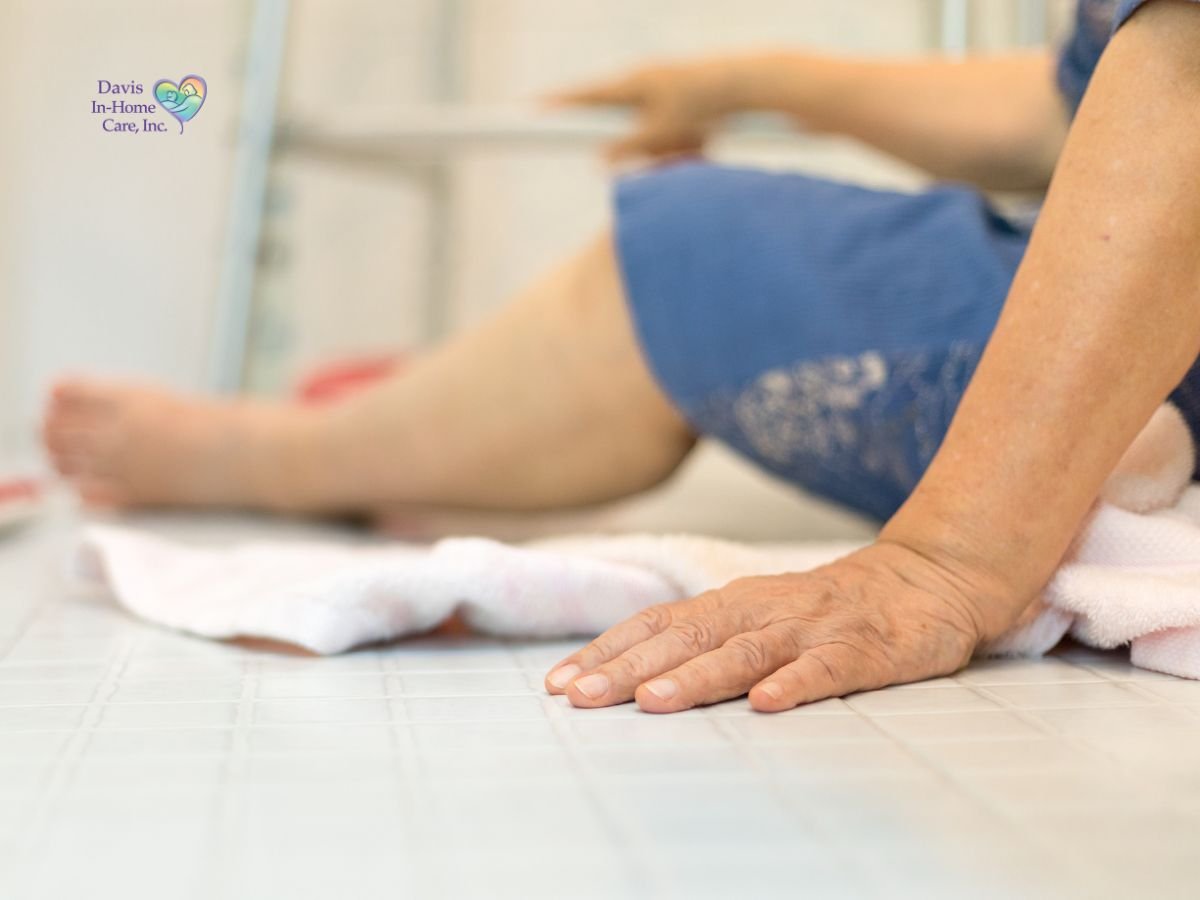Why Does My Elderly Parent Keep Falling and How Can I Prevent It
By Drew Davis, Owner
Watching an elderly parent struggle with frequent falls can be unsettling and frustrating. Falls are one of the leading causes of injuries in older adults, often resulting in fractures, hospitalizations, and a decline in overall health. While occasional stumbling may seem harmless, trips and falls among elderly individuals can signal underlying issues that need attention.
Understanding senior balance and coordination, addressing safety hazards, and taking proactive steps can significantly reduce fall risks and help seniors maintain stability and mobility for a safer, more independent life. This guide will explore the common causes of falls, practical prevention strategies, and how quality in-home care for seniors can provide the support needed to keep your loved one safe.
Common Causes of Falls in Seniors
Falls are rarely just a random occurrence. They often stem from physical, environmental, or medical factors that gradually impact a senior’s stability and mobility. Identifying these causes is key to preventing future falls.
1. Poor Balance and Weak Muscles
Age-related muscle loss (sarcopenia) reduces strength, making it harder to stay steady.
Weak leg muscles can cause difficulty standing, walking, or navigating stairs.
Poor senior balance and coordination increases the risk of stumbling.
Prevention Tip:
Encourage strength and balance exercises like Tai Chi or chair yoga.
Consider physical therapy to improve mobility and coordination.
2. Vision Problems
Cataracts, glaucoma, and age-related macular degeneration reduce depth perception and peripheral vision.
Blurred or double vision makes it harder to see obstacles.
Prevention Tip:
Ensure annual eye exams to update glasses or treat vision conditions.
Improve home lighting in hallways, staircases, and entryways.
3. Medication Side Effects
Certain medications, including blood pressure meds, sedatives, and antidepressants, can cause dizziness, drowsiness, or confusion.
Polypharmacy (taking multiple medications) increases the risk of adverse drug interactions.
Prevention Tip:
Review medications with a doctor or pharmacist regularly.
Avoid medications that cause dizziness when possible.
4. Chronic Health Conditions
Parkinson’s disease, arthritis, and diabetes can impair stability and mobility of seniors.
Dementia and cognitive decline increase confusion and risk of wandering into unsafe areas.
Prevention Tip:
Work with healthcare providers to manage chronic conditions effectively.
Provide assistive devices like walkers or canes for additional support.
5. Home Hazards
Clutter, loose rugs, slippery floors, and poor lighting make falls more likely.
Bathrooms and stairs are common danger zones.
Prevention Tip:
Remove trip hazards like loose rugs and clutter.
Install grab bars in bathrooms and non-slip mats in wet areas.
6. Footwear and Improper Clothing
Shoes with worn-out soles or high heels make it harder to maintain stability.
Loose or overly long clothing increases the risk of tripping.
Prevention Tip:
Ensure seniors wear non-slip, supportive shoes with good grip.
Encourage comfortable, well-fitted clothing that won’t drag on the ground.
7. Dehydration and Malnutrition
Not drinking enough water can lead to low blood pressure and dizziness.
A lack of essential nutrients weakens bones and muscles.
Prevention Tip:
Encourage hydration and a balanced diet rich in calcium, protein, and vitamin D.
Monitor food and fluid intake to prevent deficiencies.
8. Lack of Physical Activity
A sedentary lifestyle weakens muscles and impairs flexibility.
Sitting for long periods leads to joint stiffness and poor circulation.
Prevention Tip:
Encourage daily movement, even simple activities like stretching or short walks.
Explore senior exercise programs designed to improve strength and flexibility.
Fall Prevention Tips for a Safer Home
Creating a fall-proof environment is crucial for ensuring the safety of your elderly parent. Here’s how to reduce trips and falls among elderly individuals at home:
Improve Lighting: Install motion-sensor lights in hallways and bathrooms for nighttime visibility.
Secure Rugs and Cords: Use double-sided tape or remove rugs entirely to prevent tripping.
Install Handrails and Grab Bars: Essential in bathrooms, staircases, and any area where extra support is needed.
Use Non-Slip Flooring: Avoid polished, slippery surfaces in high-traffic areas.
Arrange Furniture for Clear Pathways: Ensure walking areas are wide, clutter-free, and easy to navigate.
For a home safety assessment, consider resources like the National Institute on Aging’s Fall Prevention Guide.
How Quality In-Home Care Can Help Prevent Falls
If your elderly parent is experiencing frequent falls, quality in-home care for seniors in California can provide much-needed support. A professional caregiver can:
✔ Assist with daily activities, reducing the need for seniors to overexert themselves.
✔ Provide mobility support, ensuring safer movement throughout the home.
✔ Encourage strength and balance exercises to improve senior balance and coordination.
✔ Help with medication management to prevent dizziness or confusion.
✔ Create a safe, fall-proof environment by identifying hazards before they become a problem.
Frequent falls should never be ignored—they are a warning sign that something needs to change. By understanding the causes of falls, making the home safer, and seeking quality in-home care for seniors in California, you can help your loved one stay independent and secure.
If your elderly parent is struggling with stability and mobility, we’re here to help. Our caregivers provide personalized fall prevention strategies, mobility assistance, and daily support to ensure your loved one remains safe and confident at home.
📞 Contact us today to learn how we can create a safer, more comfortable environment for your senior loved one.
LEGAL DISCLAIMER
This blog provides general information and discussions about causes and prevention tips of falls among the elderly. It is not intended and should not be construed as medical or legal advice.


